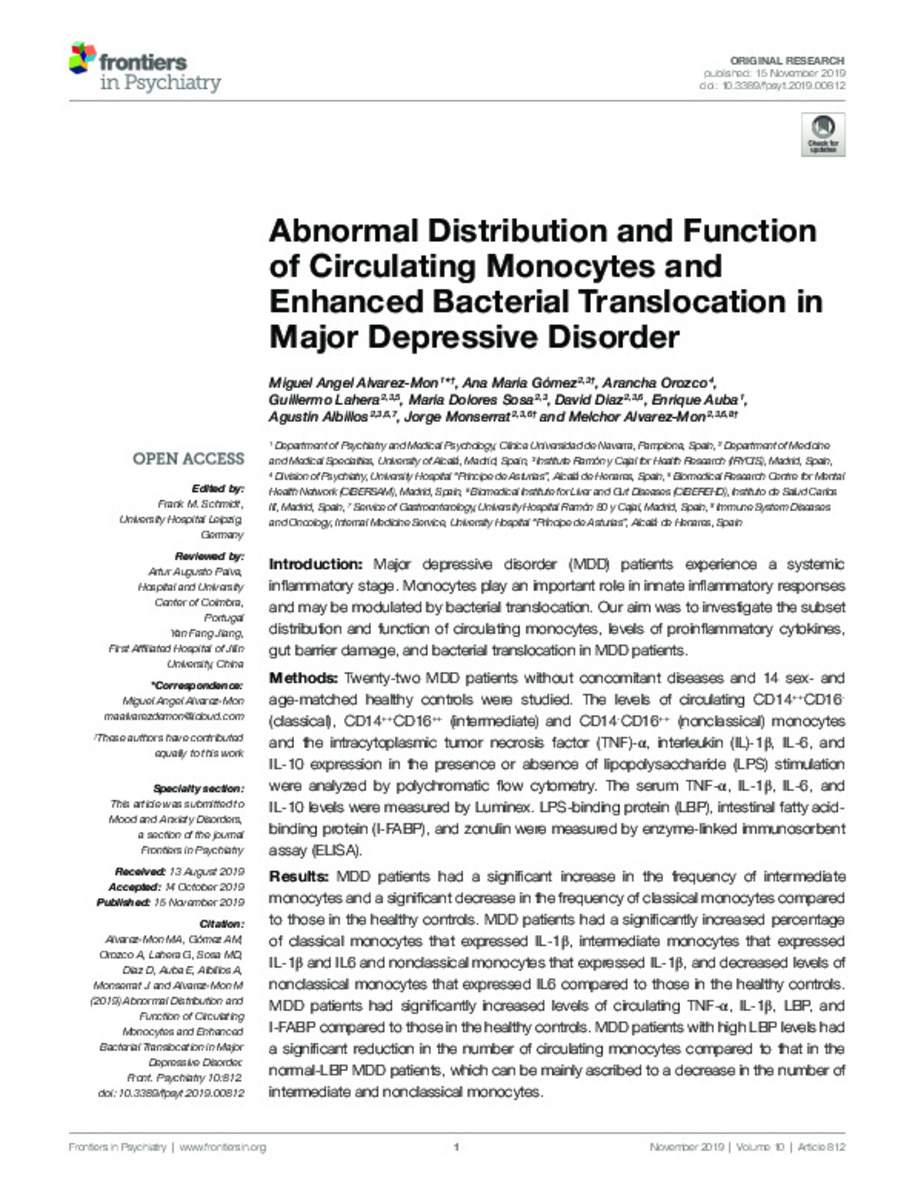Abnormal Distribution and Function of Circulating Monocytes and Enhanced Bacterial Translocation in Major Depressive Disorder
Keywords:
Materias Investigacion::Ciencias de la Salud::Psiquiatría y psicología
Monocyte
Cytokines
Bacterial translocation
Gut barrier damage
Systemic inflammation
Major depressive disorder
Publisher:
Frontiers Media SA
Note:
This is an open-access article distributed under the
terms of the Creative Commons Attribution License (CC BY). The use, distribution
or reproduction in other forums is permitted, provided the original author(s) and
the copyright owner(s) are credited and that the original publication in this journal
is cited, in accordance with accepted academic practice. No use, distribution or
reproduction is permitted which does not comply with these terms.
Citation:
Álvarez-Mon, M.Á. (Miguel Ángel); Gomez-Uriz, A.M. (Ana María); Orozco, A. (Arancha); et al. "Abnormal Distribution and Function of Circulating Monocytes and Enhanced Bacterial Translocation in Major Depressive Disorder". Frontiers in Psychiatry. 10 (812), 2019, 1 - 12
Statistics and impact
0 citas en

Items in Dadun are protected by copyright, with all rights reserved, unless otherwise indicated.







